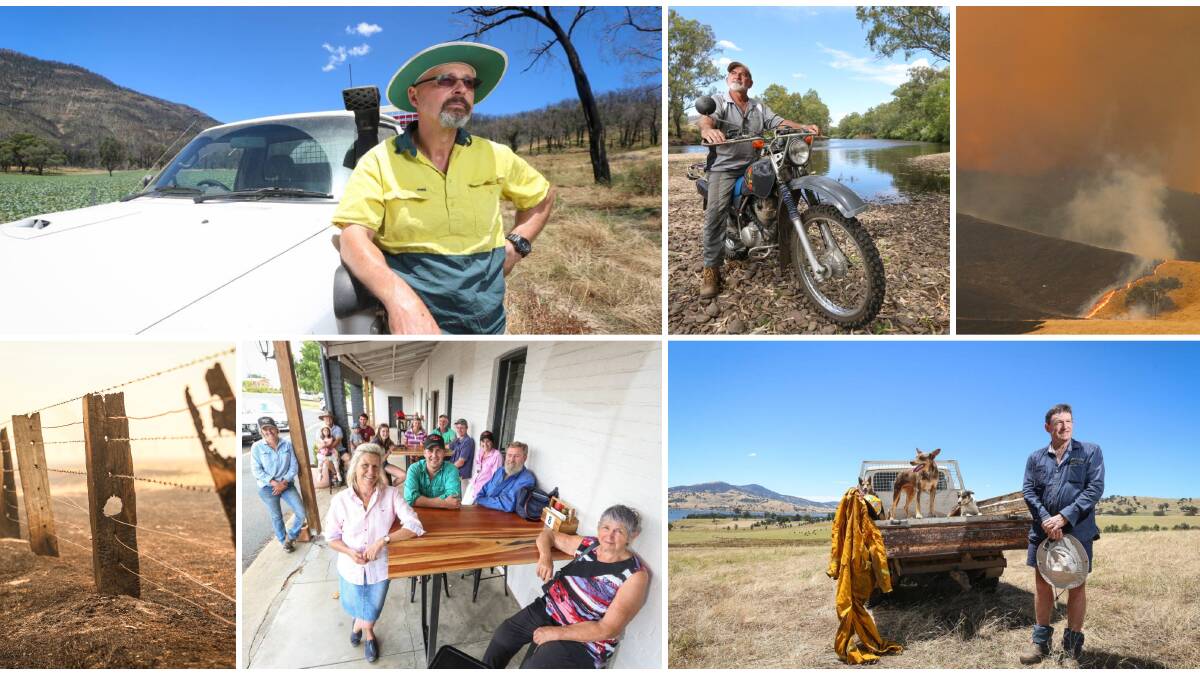
One year on from a devastating summer, The Border Mail visited fire-affected communities to find out how people are going and what lies ahead. These are their stories of heartbreak, community and resilience.
Subscribe now for unlimited access.
or signup to continue reading
Whorouly and Carboor
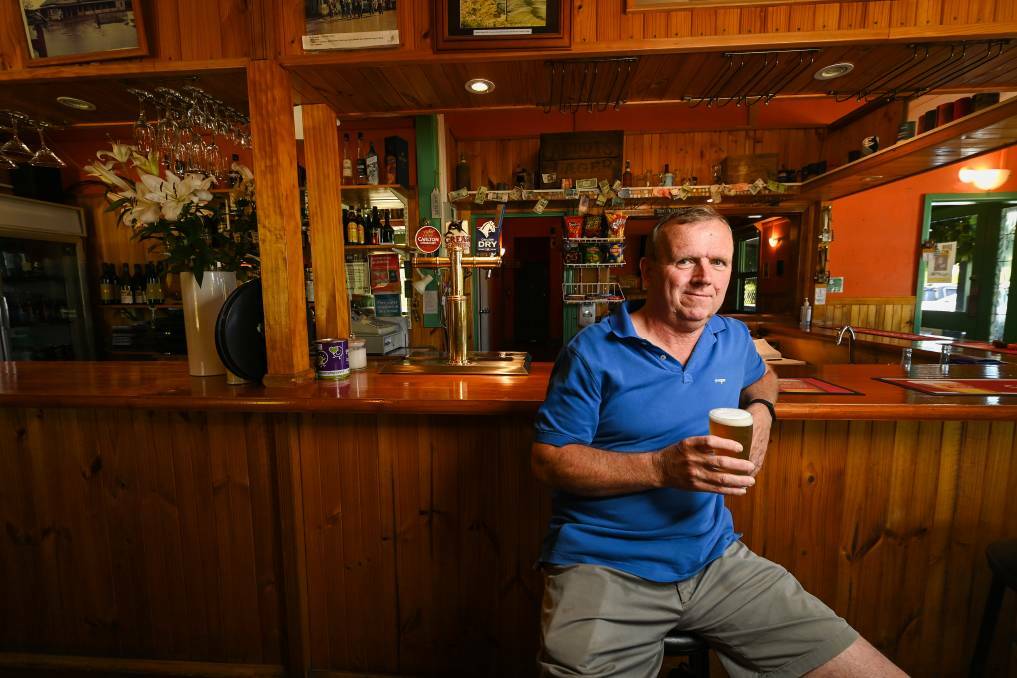
Shana Morgan
As dangerous fires burned less than 10 kilometres away from Whorouly in January 2020 and firefighters worked to keep them away from nearby townships, there was one important thing the pub could do - stay open for a beer.
Whorouly Hotel owner Tony Buchan and his partner had only taken over running the pub in mid-2019, but it quickly became a central point of the community during the emergency 12 months ago.
The Abbeyard fire would grow to over 100,000 hectares in size and pose a serious threat to communities.
Mitta
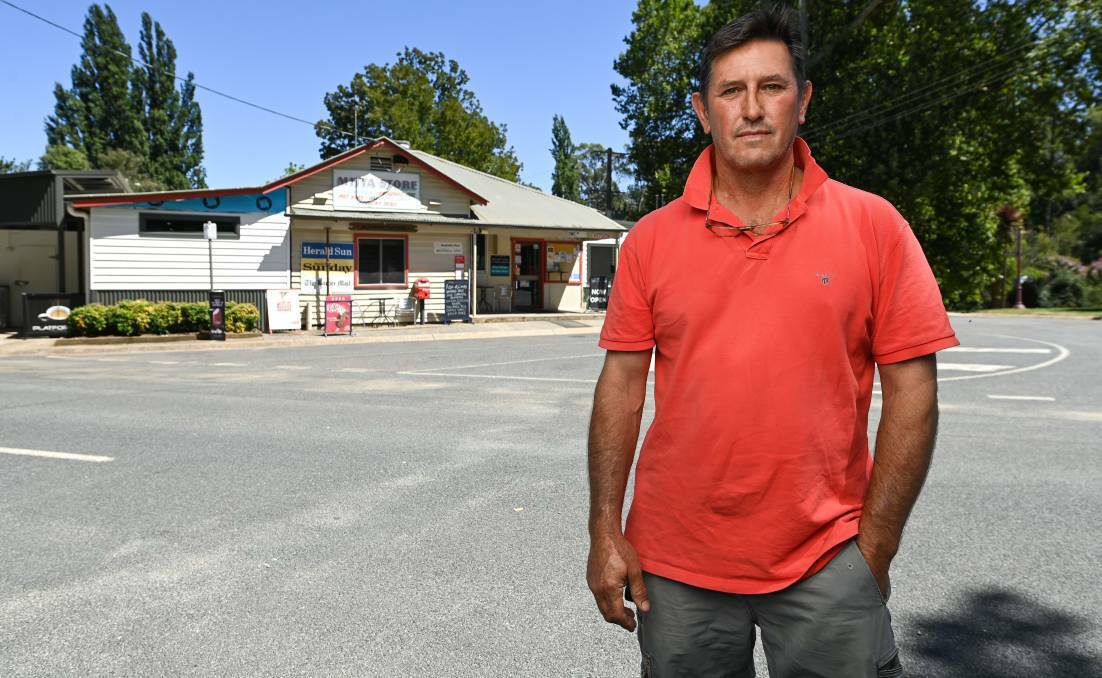
Georgia Smith
If you ask Mitta residents what it is that draws people to the town year after year, they'll have a list of reasons ready for you.
From camping to fishing, kicking back for a drink at the pub, or even just enjoying a day by the creek, you can see why Mitta comes alive with tourists when the weather warms up.
But the combination of last summer's bushfires and the following COVID-19 pandemic forced the town into stillness.
Mitta pub co-manager Chris O'Connor and general store owner Richard Hay reflect on the year that was and how the hardships changed the town and its businesses, for better and for worse.
"Small towns like this stick together."
READ THE FULL STORY HERE
Tawonga and Tawonga South

Beau Greenway
Elene Wood can't fight fires, but she can make cakes.
The Tawonga cake decorator lost several bookings as the bushfires took hold around the Alpine region 12 months ago and weddings were soon to be impacted by the COVID-19 pandemic.
Mrs Wood has been a long-time volunteer at the Australian Open as a driver for the world's best tennis players and was on her way down to Melbourne for the tournament as the fires neared Tawonga.
Mrs Wood returned from Melbourne with her home and cake decorating studio unaffected by the disaster and had three weddings to make cakes for.
She'd already started to prepare them when it was announced the nation would enter lockdown in March in a bid to stop the spread of the virus.
But Mrs Wood made sure it didn't go to waste.
READ THE FULL STORY HERE
Tallangatta
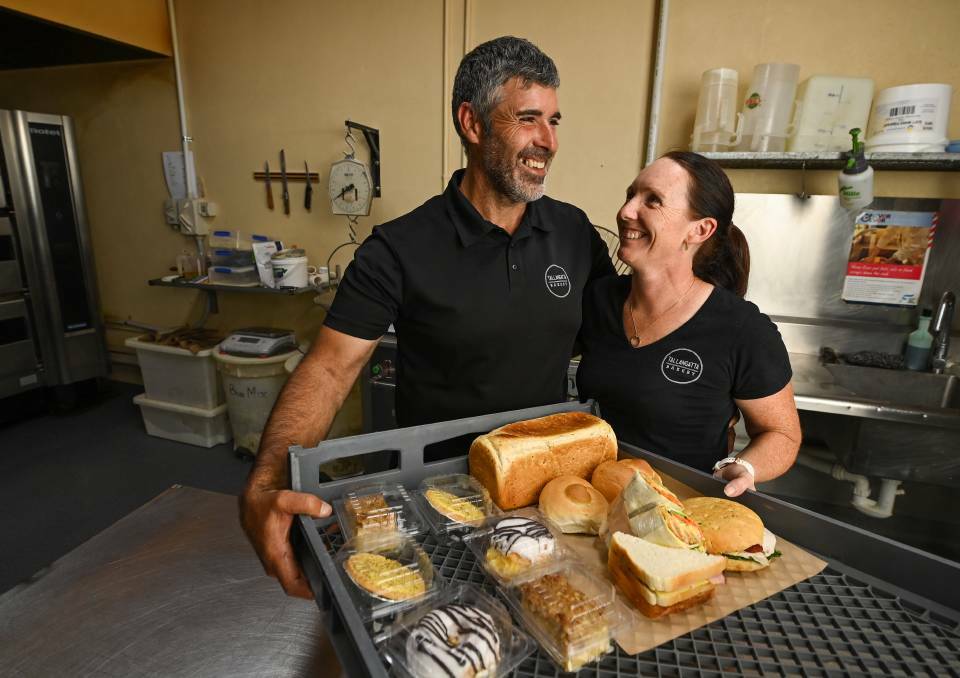
"I've never been so humbled by people's help in my entire life."
While fire didn't blaze through the township of Tallangatta, they certainly weren't immune to the devastation.
The usually calm main street became the heart of the response to the bushfire crisis, as the town transformed into a base of support for their neighbours in the Upper Murray.
No task was too great as residents banded together to work around the clock until the heavy smoke lifted.
Now 12 months on, residents reflect on what happened and how it's changed them, and Tallangatta.
READ THE FULL STORY HERE
Mount Beauty
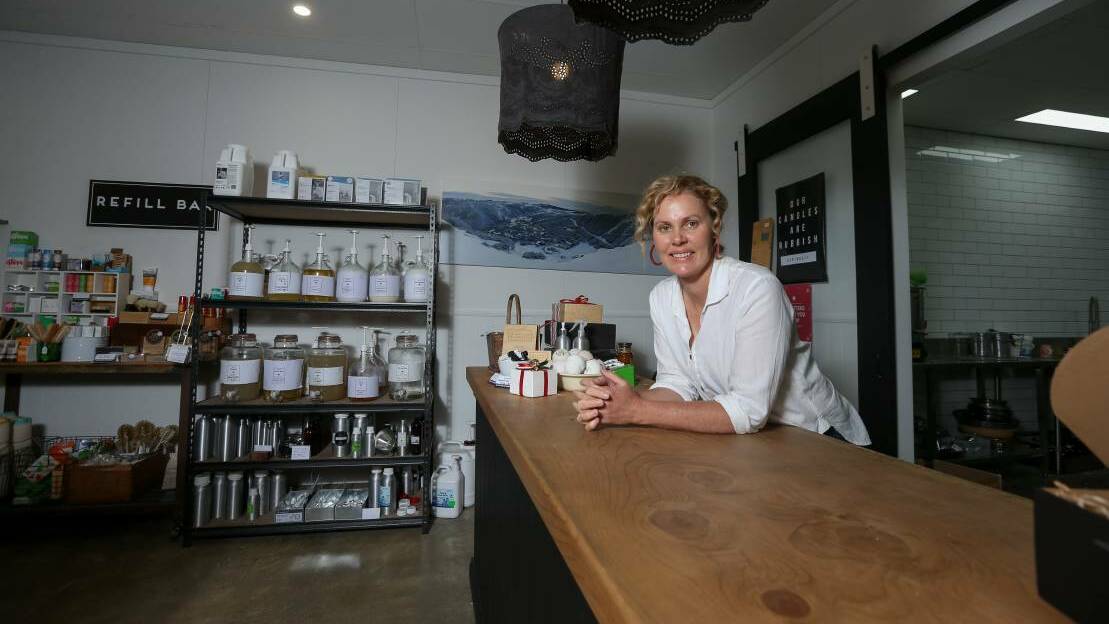
Beau Greenway
After a year in her new business at Mount Beauty, Lee Docherty couldn't be happier.
Mrs Docherty experienced a full year of what can be described as "normal trade" after she launched her store Gather and Harvest, which stocks a range of homemade candles, soaps, body products and teas.
But the start of year two was far from normal as bushfires surrounded the Alpine region.
Mrs Docherty grew up at Gundowring and has experienced many bushfire seasons, but admitted the length of time with this one made it the most difficult.
"We were back home for the Black Saturday fires (in 2009), but it was hard and fast. They were intense and it was horrible, but within a couple of days the bulk of it was over," she said.
"With these ones, it lingered for so long. It was two or three weeks and the smoke was horrendous."
READ THE FULL STORY HERE
Khancoban

Janet Howie
Louise Werrett has a simple thought about the year to come.
"Bring it on," she said without hesitation.
A Khancoban resident for 37 years, Louise feels optimistic about her little town after a year disrupted by fire threat and aftermath, COVID restrictions and isolation.
Lesley Barlee, who arrived in 1969, is upbeat as well.
"It's been a hard year but I think the rewarding thing is we kept plugging on," she said.
"The op shop's open now and there's people coming up from Corryong, they can see Dee's getting stuck into the new shop, Ron's got beautiful stuff in his post office."
READ THE FULL STORY HERE
Harrietville
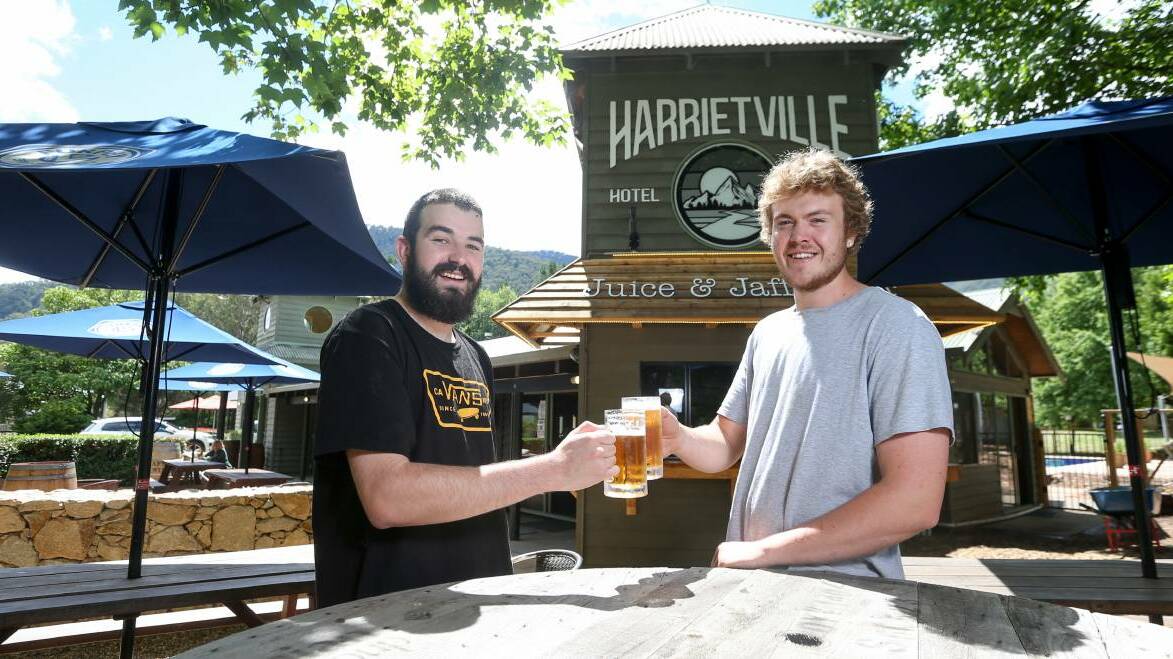
Beau Greenway
They say timing is everything.
For Western Australian pearl farmers Ross and Dianne Larard, the purchase of a Harrietville pub just weeks before devastating bushfires and a global pandemic was far from ideal.
"We're quite well established on the other side of the country, but we didn't really expect to come here to fight fires. That wasn't in the brochure so to speak," Mr Larard said.
"We haven't copped it worse than anyone else, everyone is in the same boat really. That's just nature.
"We went up to the north-west (of Western Australia) on quite a big adventure, which was a multi-million dollar investment, and we got cleaned up by two cyclones.
"We were pearl farming then and it sunk two boats and wiped the whole farm out, so we're quite used to it.
"When we got here and I saw the fires I thought 'here we go again, let's hope it doesn't burn the pub down' and it didn't."
READ THE FULL STORY HERE
Myrtleford
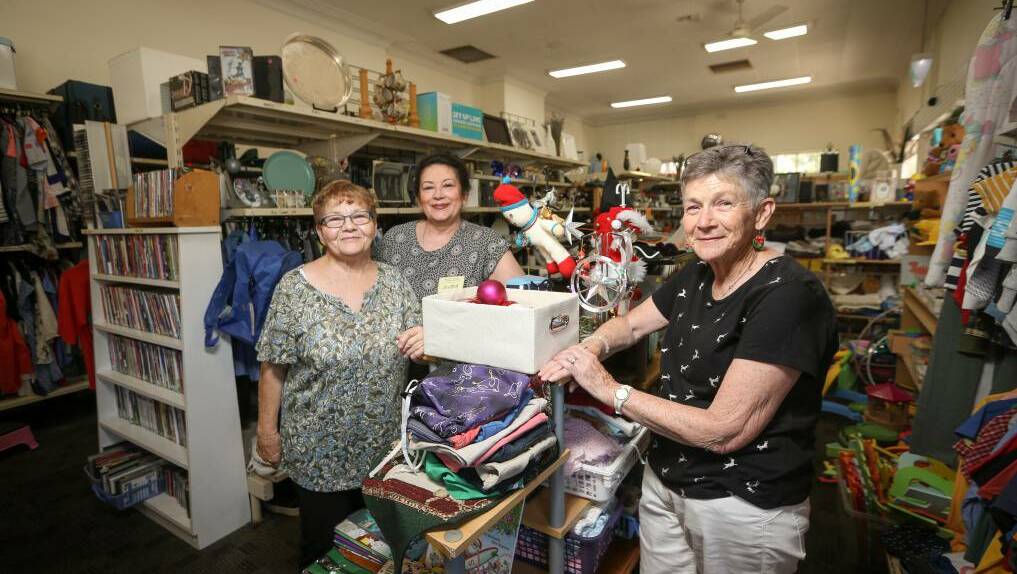
Shana Morgan
"There are a lot of people in this town that got lucky."
That is the feeling of some Myrtleford residents who still remember the horrors of Black Saturday and recognised the signs of another potentially tragic bushfire event 12 months ago.
It was the first week of January, as fires were burning in the Alpine area, that authorities issued a watch and act for Myrtleford.
While the fires never ended up going through the town, that could have been different with one change of wind.
Myrtleford Cycle Centre owner Steve Connor was one who decided to not take any chances.
"I looked outside and there was thick smoke, you couldn't see across the paddock," he said.
"Even if I stayed up, I wouldn't know until the embers started falling.
"All my neighbours were gone, there were no eyes so I thought 'there's no point in being here'.
"I threw the cat in the car and I drove back to Wang."
READ THE FULL STORY HERE
Dartmouth
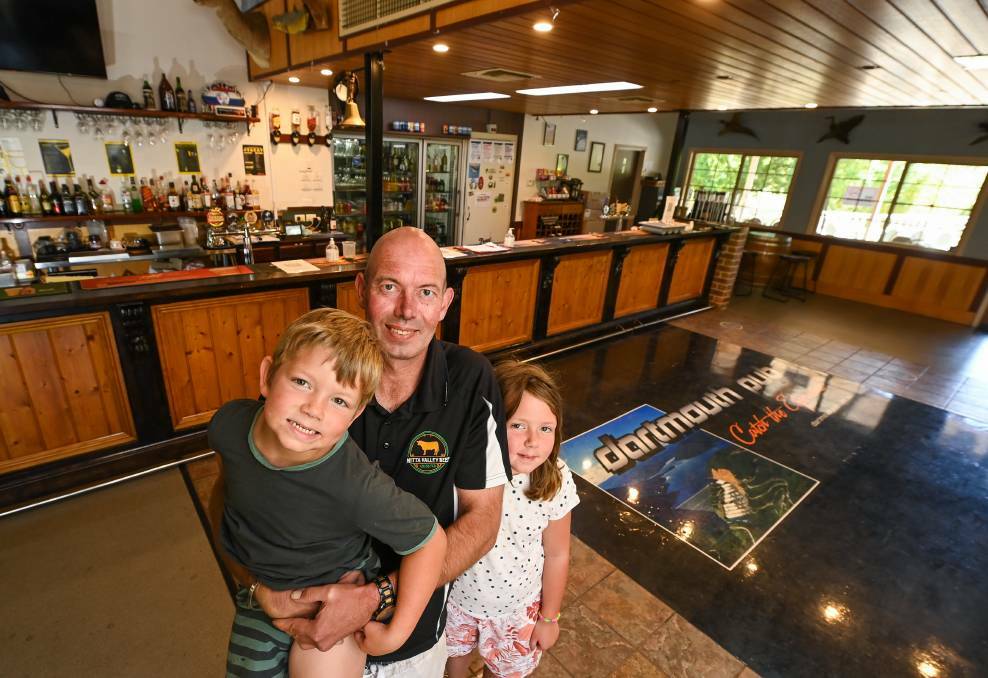
While last summer's bushfires didn't sweep through the township of Dartmouth, it took many residents back to a time they would rather forget.
Flashbacks of the devastating 2003 Australia Day bushfires reappeared in the minds of many long-time residents as they wondered what their fate would be this time.
Dartmouth CFA captain Jono Dower was just a 16-year-old when he fought that ferocious blaze, which changed the town forever.
"It was pretty full on," he said.
Now in 2021, Mr Dower and other residents of the fisherman's paradise reflect on the inroads they've made in fire prevention and how the town rallies as one when the going gets tough.
READ THE FULL STORY HERE
Walwa

Vivienne Jones
For 12 days Walwa was under attack.
For 12 long, tiring, hot days, the community, CFA, farmers on the back of utes, nurses, volunteers and everyone in between, fought to save their town.
And they did.
The small rural town, on the Victorian side of the river, had many losses, but it was its strength as a community, a team, that saved the township.
Those 12 days are still very raw for a lot of people, but more than 12 months on, their fighting spirit still shines through.
CFA captain David Hanna, believes if it wasn't for the extra CFA support crews and trucks, the town would have been wiped out.
READ THE FULL STORY HERE
Nariel Valley

Ellen Ebsary
Three months after the Upper Murray fires, Rowan Surtees received his CFA magazine in the mail.
Reading about one brigade that saved "two houses, a machinery shed full of tractors, a hay shed ... two bulls and a number of cows", Rowan made a comment to his wife.
"I said to Bev, 'That's our place, I bet'," Rowan said.
"There were stories about the fires last year, and they were talking about the Baranduda brigade protecting houses at Nariel Valley."
The cattle farmer didn't know the names of the firies who were stationed outside of his late father's house early on December 31, as he was on the Nariel tanker elsewhere.
READ THE FULLY STORY HERE
Tintaldra

Janet Howie
Making sure people have the chance to connect and a place to go is a priority in Tintaldra.
Most farms around the small township burned when fire swept through on January 4, 2020, but now residents prefer to look forward, not back.
Like other communities, Tintaldra held nothing formal to mark the anniversary of last summer's fires.
As long-term resident Jo Mackinnon observed, "people haven't really talked about it very much".
"I think everyone's just checking in on each other and making sure that everyone's OK," she said.
"Everyone's very relieved that we've had such a soft summer.
"I think if it had been a really hot week, people's reactions would have been very different."
READ THE FULL STORY HERE
Bright

Shana Morgan
If you take a trip to Bright in January 2021 you will see a tourist town bustling with visitors and it seems, from the outside, that everything is great.
But underneath, the residents and businesses of Bright and surrounds are still dealing with the horrors of 2020 that began with the bushfires 12 months ago.
The bushfires did not reach the town itself, but people were on edge as nearby areas such as the Buckland Valley and Mount Buffalo burned.
A normal summer in Bright involves an influx of visitors, accommodation booked out, businesses full and families splashing in the Ovens River.
A year ago, they were staying away for their own protection from the fires.
Then COVID-19 hit.
The tourism recovery that towns needed so desperately in early 2020 did not happen and Bright one was of many ghost towns in the North East.
READ THE FULL STORY HERE
Jingellic

There is an overwhelming sense of just getting on with it that runs through the Jingellic community.
Despite kilometres of paddocks and hill tops still scorched 12 months on from the bushfire which claimed the life of RFS volunteer Samuel McPaul on the outskirts of town and left many with just the four walls of their home, these country folk are made of steel.
For the local fire captain, reminiscing on the day the fire front fiercely jumped his home, crossing onto the other side of the river, is still just a blur.
Communications were down, firefighters were scrambling and RFS captain Alby Maras was at home on January 30 when the Green Valley fire came across River Road.
"We were filling up from the river here, but the river was a lot lower than it is now and at the time the logs in the middle of the river were on fire," he said.
"That was the intensity of the heat."
READ THE FULL STORY HERE
Corryong and Guys Forest
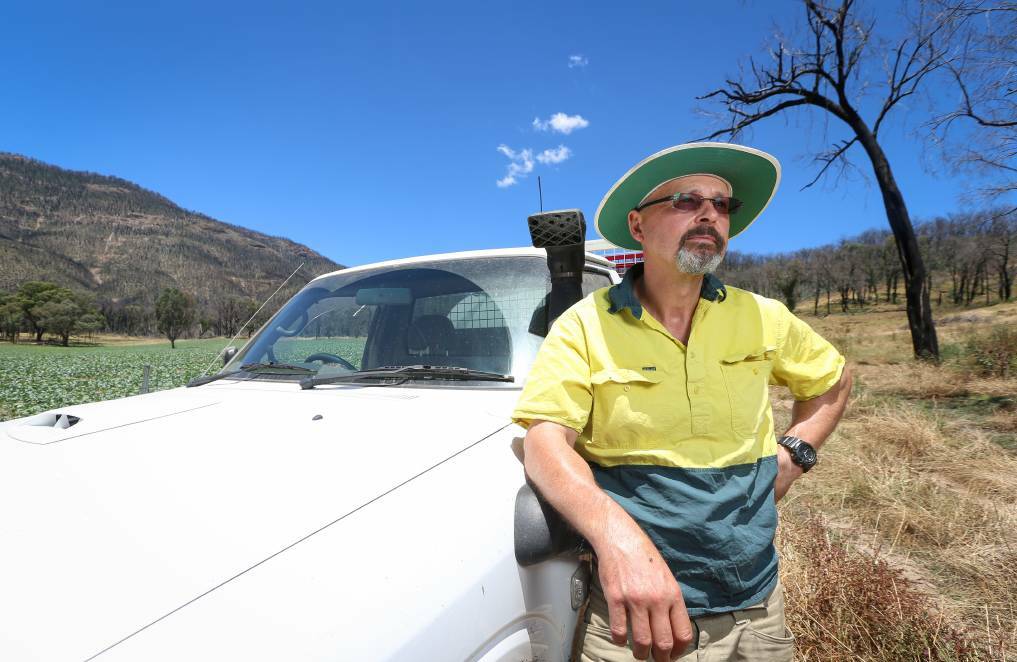
Janet Howie
Not everyone is prepared to say 2020 was a bad year.
"I had a granddaughter born, so I am not writing off the whole year," Marita Albert said.
"I also published a book in June, something else I'd been working on for 10 years.
"So having that locked away time actually worked well, it's not been a complete waste.
"It's been a very challenging year of change, is how I would sum it up."
READ THE FULL STORY HERE
Towong
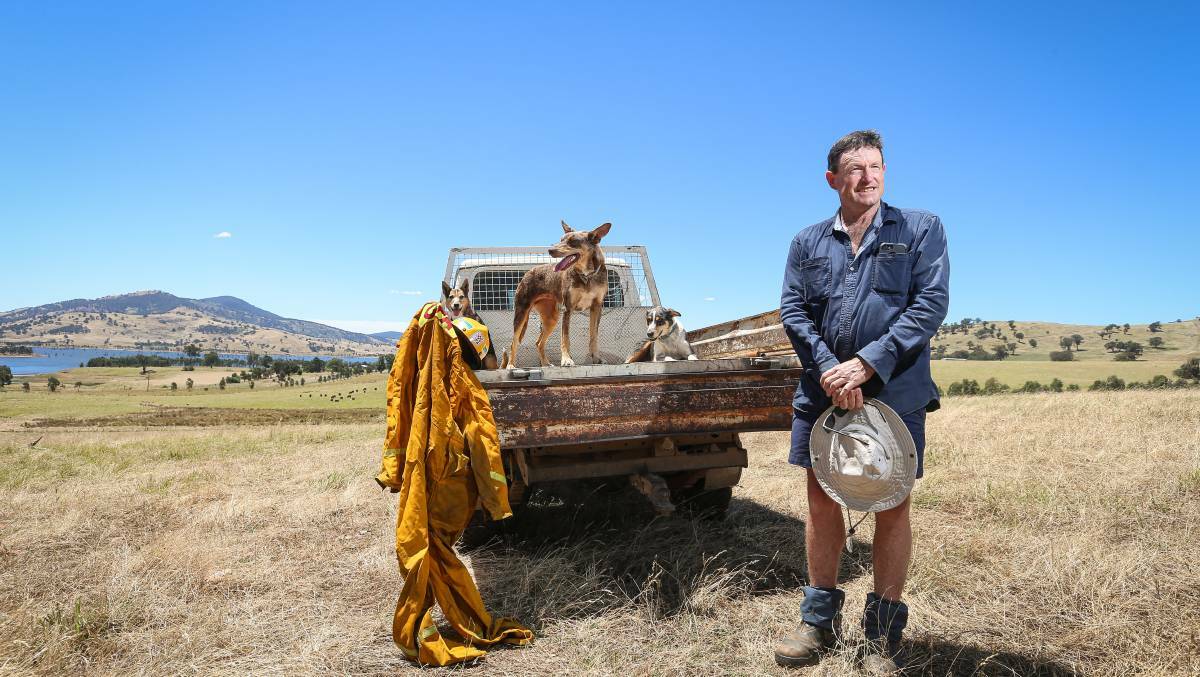
David Johnston
Granya to Corryong is a trip David Wortmann makes regularly.
As mayor of a Victorian council with one of the smallest populations, but largest geographic areas, the hour-plus journey for a council meeting, community event or follow up on the latest gripe about the condition of a local road is part and parcel of the job.
More often than not, the Upper Murray is picture perfect.
It's undisputed natural beauty helped by reliable annual rainfall.
But in late 2019, the western end of Towong Shire around Tallangatta was gripped by drought and closer to Corryong things were marginally better.
Tinder dry bushland had locals feeling nervous the most, acutely aware if the wrong set of circumstances lined-up the region was a monumental fire risk.
The Upper Murray has seen fires before including Black Saturday 1939.
But what unfolded from late December to mid-January last year was unprecedented.
READ THE FULL STORY HERE

